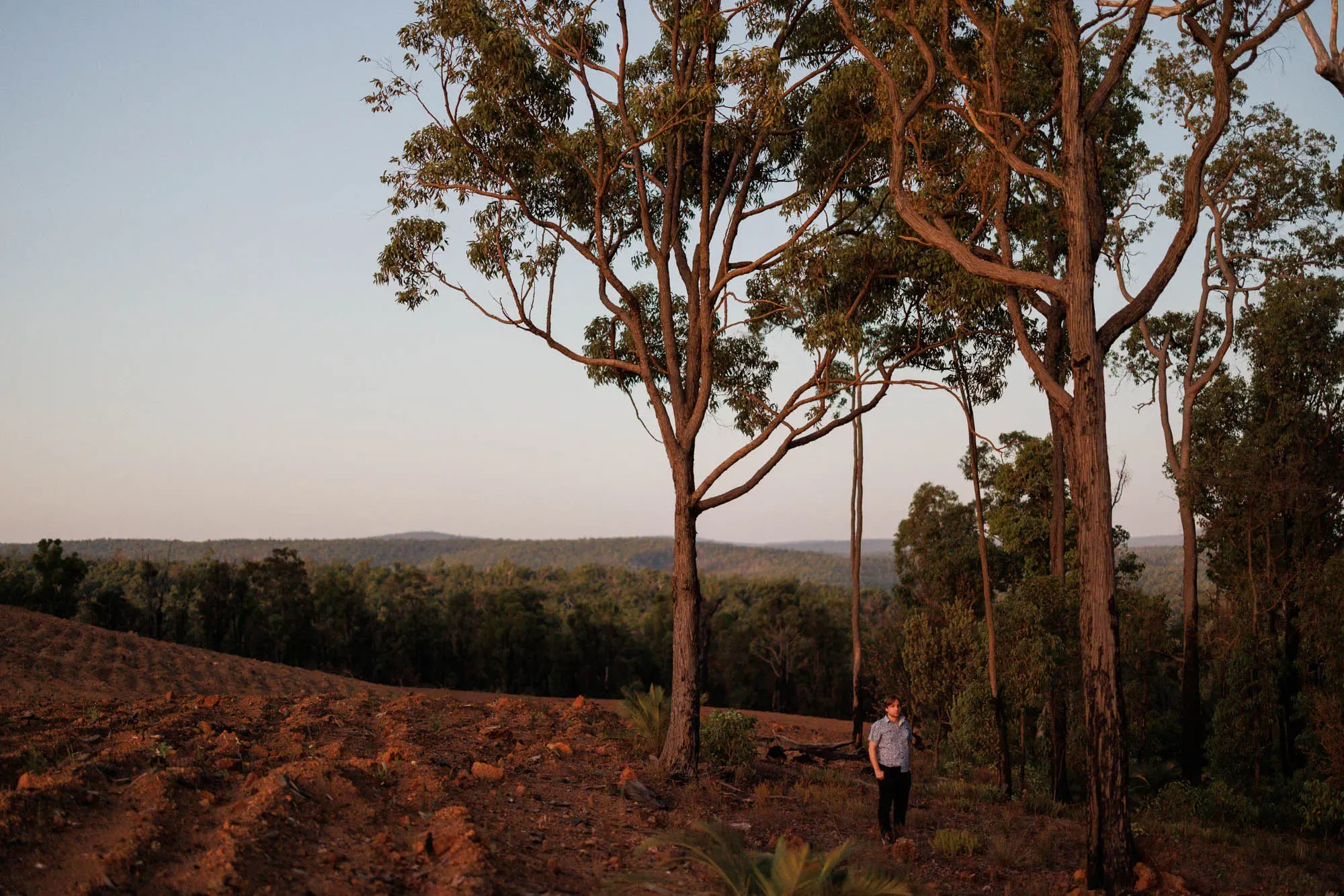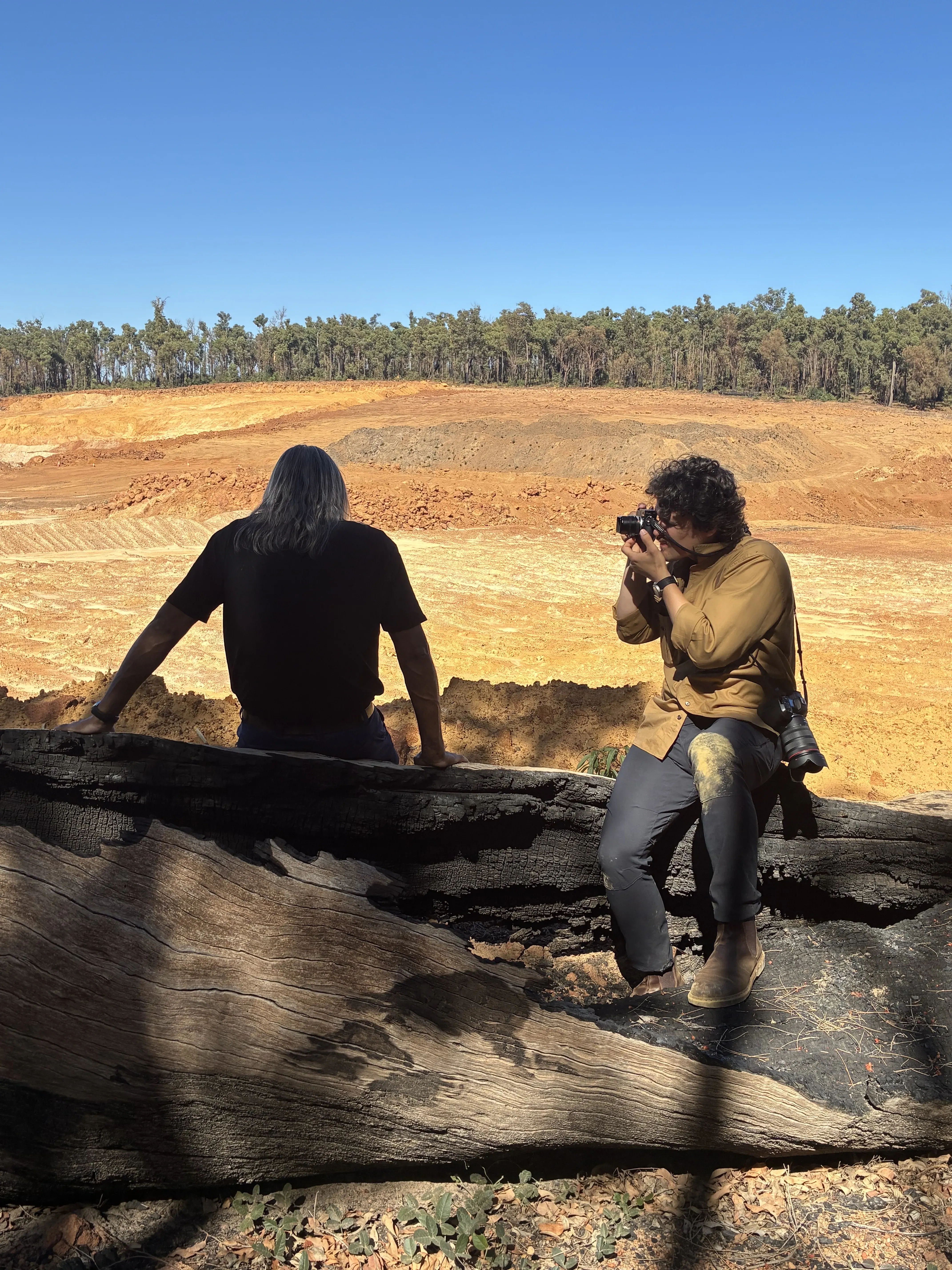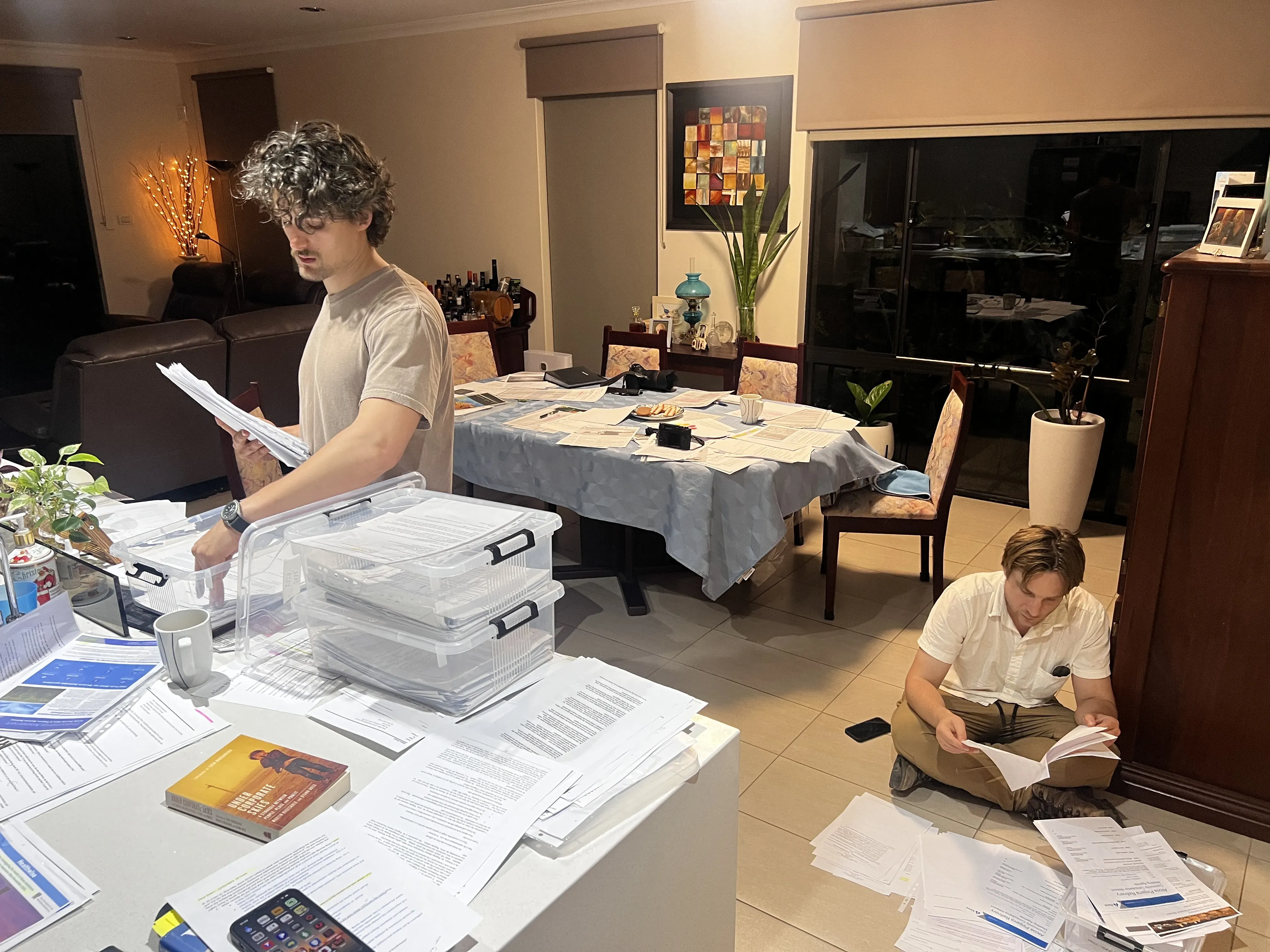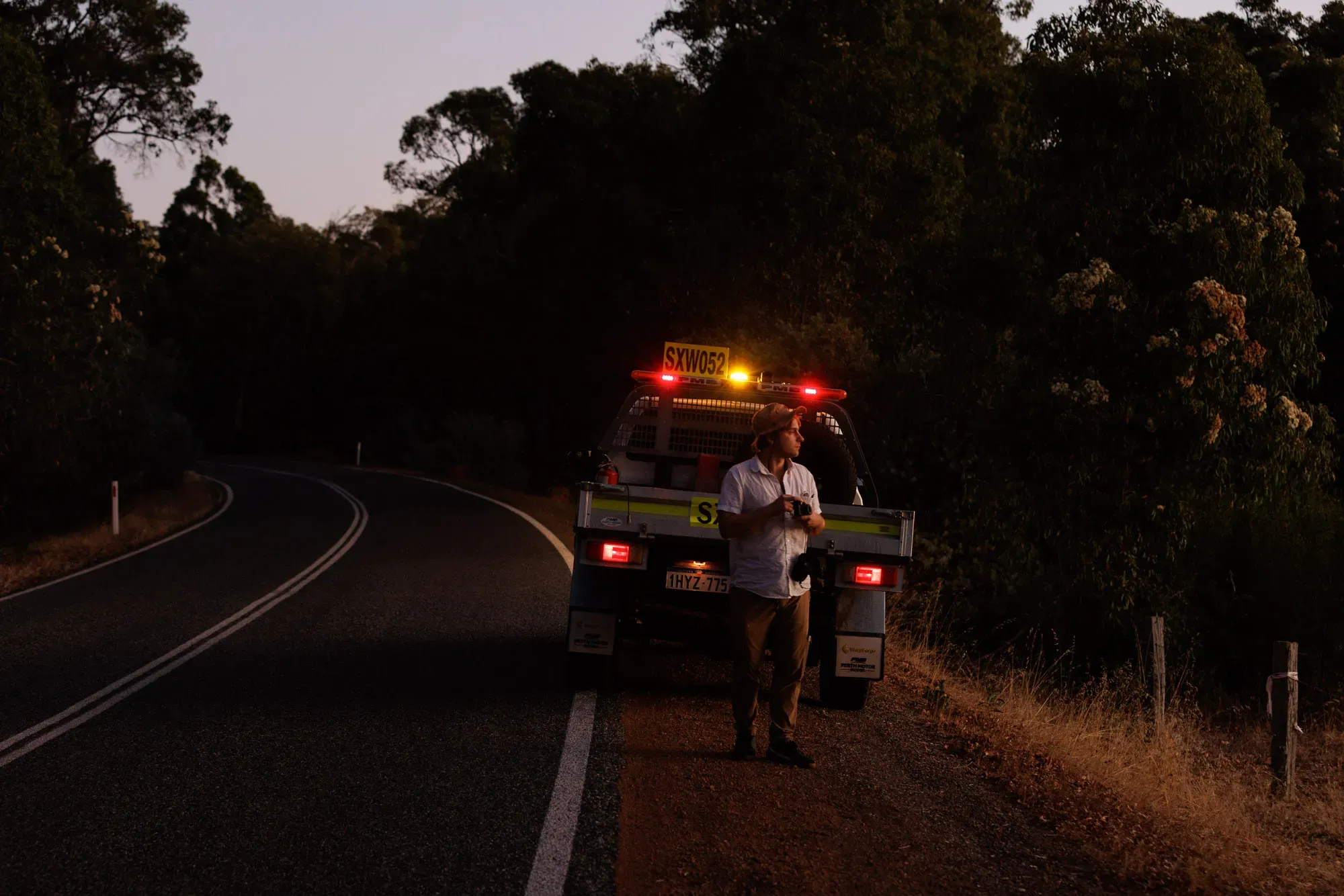
PublicSource has always pursued corporate accountability in and around Southwestern Pennsylvania, so probing Alcoa in Australia didn’t stretch its mission—though it did require some extra help.
The reporters in the rented pick-up pulled up behind a truck full of young men whose guns were sticking out the windows. After hearing a warning that the road would be rough, the PublicSource team followed the Noongar hunters into the bush. Minutes later, the reporters found their wheels spinning in sand, when suddenly the hunters’ vehicle zipped ahead.
The young Noongar men — members of one of Australia’s largest Indigenous groups — had bagged a kangaroo.
Quinn Glabicki photographed the marsupial’s skinning while Jamie Wiggan took notes — the raw material for the opening of “Alcoa Mines Australia’s Forest,” a series supported by the Pulitzer Center and published recently in PublicSource, a nonprofit news organization serving the Pittsburgh region.

As a nonprofit journalism organization, we depend on your support to fund more than 170 reporting projects every year on critical global and local issues. Donate any amount today to become a Pulitzer Center Champion and receive exclusive benefits!
There are few places in the world farther from Pittsburgh than Western Australia. Nonetheless, a nonprofit newsroom of 16 people put a team in the wilds south of Perth for 16 days to bring home a story of an iconic American company’s slow-motion collision with a unique and imperiled ecosystem.
Alcoa is one of Pittsburgh’s industrial pillars, a Fortune 500 company producing aluminum and positioning itself as a sustainability striver. Company leadership has been upfront that its plans are built on increased mining in Australia’s Northern Jarrah Forest, a tapestry of 8,000 species that is already teetering from resource extraction and climate change. The forest is also beloved by its most ancient inhabitants, the Noongar, and the area’s water resources are critical to the 2.3 million people of Perth.
That’s the logic that propelled Deputy Editor Wiggan and Environment and Climate Reporter/Photographer Glabicki to travel more than 11,000 air miles. It takes more than a solid local angle, though, to bring such a story to fruition.
Thanks to the Richard C. Longworth Media Fellowship, awarded to Glabicki and Wiggan earlier this year, the two journalists received funding to report on Alcoa's mining operations.

From a noisy concrete plant to Down Under
The seed of “Alcoa Mines Australia’s Forest” was a story about a loud and dusty concrete plant in Coraopolis, a suburb just 17 miles from the PublicSource newsroom in Pittsburgh’s Uptown. That story was squarely in the heartland of Wiggan’s expertise as a hyperlocal journalist unafraid to get a little dirty. It was also a natural for Glabicki, who became part of the PublicSource newsroom on the heels of an immersion in the little city that hosts U.S. Steel’s Clairton Coke Works.
The concrete plant coverage led to conversations between Wiggan and Australians interested in sharing the story of the jarrah forest with people in Alcoa’s hometown. Those conversations had to be timed for those relatively few hours when both Pittsburghers and Perthians are awake.
“We saw an opportunity for PublicSource to go global,” Wiggan said later.

The PublicSource team also saw a window to take its corporate accountability work intercontinental. Launched in 2011, PublicSource has long had eyes on Pittsburgh-area heavy industry, healthcare providers, tech companies, banks and fossil fuel firms. Glabicki’s series “EQT’s Gas Play” took that coverage area well beyond the Pittsburgh region and deep into West Virginia’s fracking fields, bringing numerous journalistic honors while shedding light on a Pittsburgh-based company’s treatment of communities a few hours from its headquarters.
Of course, you can’t drive from Pittsburgh to Perth. Even before the PublicSource team fully evaluated the logistics of reporting in Australia — flights, lodging, transportation, insurance, costs of daily living, a bush plane ride for aerial photography — it was obvious that the newsroom would need financial backup.
National backing for local newsrooms
PublicSource applied for the Pulitzer Center’s Richard C. Longworth Media Fellowship, which aims to reconnect Midwestern readers with international stories that impact their daily lives. The Pulitzer Center generously supported “Alcoa Mines Australia’s Forest,” noting in its announcement: “After years of financial pressure forcing traditional regional media outlets to cut foreign correspondents from their staffs, nonprofits like PublicSource are stepping up to fill an important void.”
“Without them, we wouldn’t be able to get out to Australia,” said Glabicki, whose prior investigation, “EQT’s Gas Play,” was also backed by the Pulitzer Center.
The Fund for Investigative Journalism also backed “Alcoa Mines Australia’s Forest.”
Extra support from the Pulitzer Center and FIJ “not only enabled us to go there, but it allows us to dedicate the right amount of time to make sure we’re coming out with an accurate, fair and, I think, beautifully told story that will engage readers,” said Glabicki.

Similarities and surprises
Jet lag and the complete absence of clouds put exclamation points on the reality that Wiggan and Glabicki were far from Pittsburgh. As the team dug in, though, some aspects of Western Australia felt just like home.
“It’s a story that most Pittsburghers, I think, are familiar with to some extent,” said Glabicki. “We’re no stranger here to large industry and kind of its impact on community and on health and on climate and environment, so when we went to Australia it was really that same story. It was still a Pittsburgh firm, and many of the impacts were the same.”
Pittsburgh has been the scene of a seemingly eternal discussion of the balance of jobs and quality of life, economics and environment. The team expected and sought that kind of calculation — but found the scales were decidedly tilted.
“It was striking that every person we stopped and asked about the company, Alcoa, that we’re reporting on, the majority of the time knew who they were and the majority of time they had very similar things to say about them,” Wiggan recounted.
Reaction was “generally negative,” said Glabicki. “I don’t think we met a single person who really was backing the company in a really robust way. I think people acknowledge the economic contributions as far as jobs that the company has had, but by and large the people living in close proximity really had negative experiences with the company.”

The team talked with mining workers, scientists, government officials, families with experience as Alcoa’s neighbors and First Nations community members and leaders, among others. Alcoa responded to months of outreach only by allowing Glabicki and Wiggan to participate in a publicly available company tour of select mining areas. The journalists tapped the company’s publications and statements.
“It remains to be seen how central aluminum will be to a green energy future,” Glabicki said. “But the situation highlights the kinds of trade-offs that can arise — in this case, clearing parts of an ecologically significant forest to support an industry tied to renewable technologies.”
Putting it all together
Returning from Australia in early April, the team spent six weeks:
- Culling through the ample material
- Planning, outlining and drafting the three stories
- Processing visuals and creating maps, charts and infoboxes
- Reaching out to potential republication partners
- Gaming out social media strategies
- Editing, fact-checking and laying out “Alcoa Mines Australia’s Forest.”
Creative Director Natasha Khan Vicens coded custom templates to highlight the visual content and the series’ central tension: That the fates of a forest and an iconic company are intertwined, and it’s unlikely both can survive.
Four days before publication, the government of Western Australia responded to requests for information and input that the team made two months prior.

The government emphasized its demand for a $100 million financial guarantee from Alcoa lest Perth’s drinking water dams are affected by mining. The response indicated an unprecedented degree of scrutiny and new conditions on Alcoa’s mining, balanced by an awareness of the company’s 4,300 workers there, plus another 1,700 employed by its contractors.
There’s that tension again.
“All of the stories at a certain point become very similar,” said Glabicki. Families in Pittsburgh’s industrial valleys and West Virginia’s fracked hollows have a surprising amount in common with families in Pinjarra, Kwinana and Yarloop. “This is really no different in a lot of ways, but the footprint is much larger. The implications for climate are far reaching. And the potential for this to cause damage to environment and climate extends far beyond what we had previously reported.”











